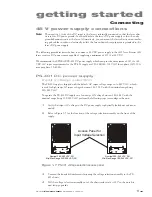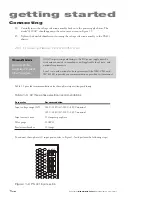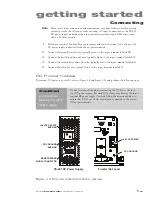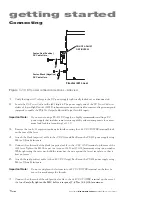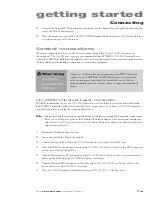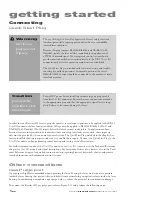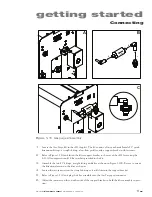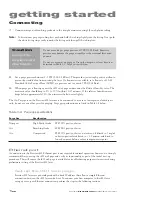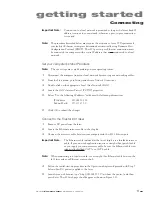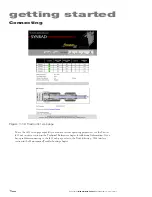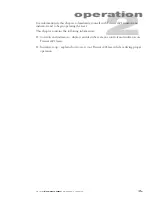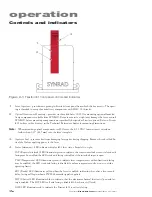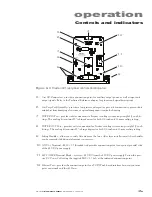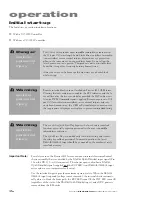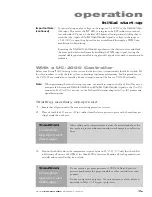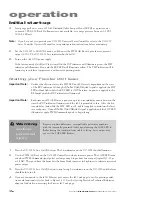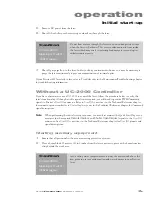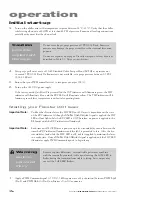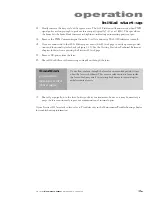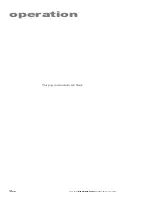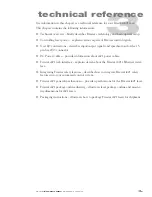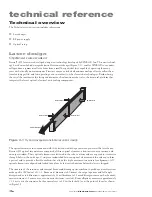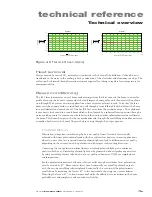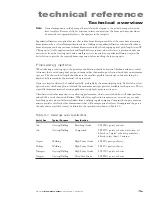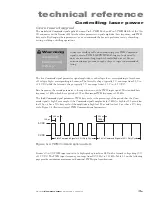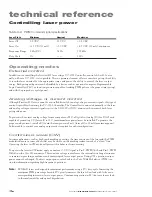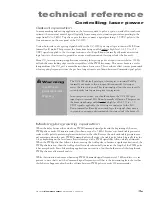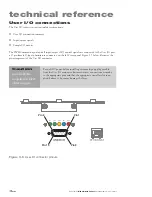
operation
2
5
Synrad
Firestar i401
operator’s manual
Initial start-up
Important Note:
To initiate lasing, apply a voltage in the range of ±5–24 VDC to the
Remote Inter-
(continued)
lock
input. This causes the
INT
LED to turn green, the
RDY
indicator to turn yel-
low, and sends DC power to the laser’s RF boards, allowing internal tickle pulses to
reach the tube. Apply a
Shutter Open Request
signal (a voltage in the range of
±5–24 VDC) to open the physical shutter assembly and then apply a PWM Com-
mand signal to begin lasing.
Removing the
Shutter Open Request
signal causes the shutter to close and block
the beam path while simultaneously disabling the PWM input signal, leaving the
internal tickle generator enabled to supply tickle signals as required to maintain tube
readiness.
With a UC-2000 Controller
Before your Firestar
®
i401 laser is put into service for the first time, its functionality should be verified. Fol-
low this procedure to verify the laser system is operating at optimum performance. For this procedure, use
the UC-2000 as a stand-alone controller; do not attempt to control the laser or UC-2000 externally.
Note:
When performing the initial start-up sequence, you must first connect the
Quick Start Plug
or you
must provide the required
Remote Interlock
and
Shutter Open Request
signals to the
User I/O
connector. See
User I/O connections
in the Technical Reference chapter for
User I/O
pinouts and
signal descriptions.
Starting auxiliary equipment
1
Ensure that all personnel in the area are wearing protective eyewear.
2
Place a beam block 0.5 meters (20 in.) inches from the laser aperture to prevent the beam from trav-
eling beyond the work area.
Caution
possible
equipment
damage
Inlet cooling water temperature must always be maintained above the
dew point to prevent condensation and water damage to your Firestar
laser.
Caution
possible
equipment
damage
Do not exceed a gas purge pressure of 5 PSI (0.34 Bars). Excessive
pressure may damage the purge assembly or other internal laser com-
ponents.
Do not use argon as a purge gas. Use only nitrogen or clean, dry air as
described in Table 1-3,
Purge gas specifications
.
3
Turn on the chiller and set the temperature setpoint between 18 °C–22 °C. Verify that the chiller
is delivering a flow rate of 4 GPM at less than 60 PSI of pressure. Examine all cooling connections
carefully and ensure that they do not leak.

